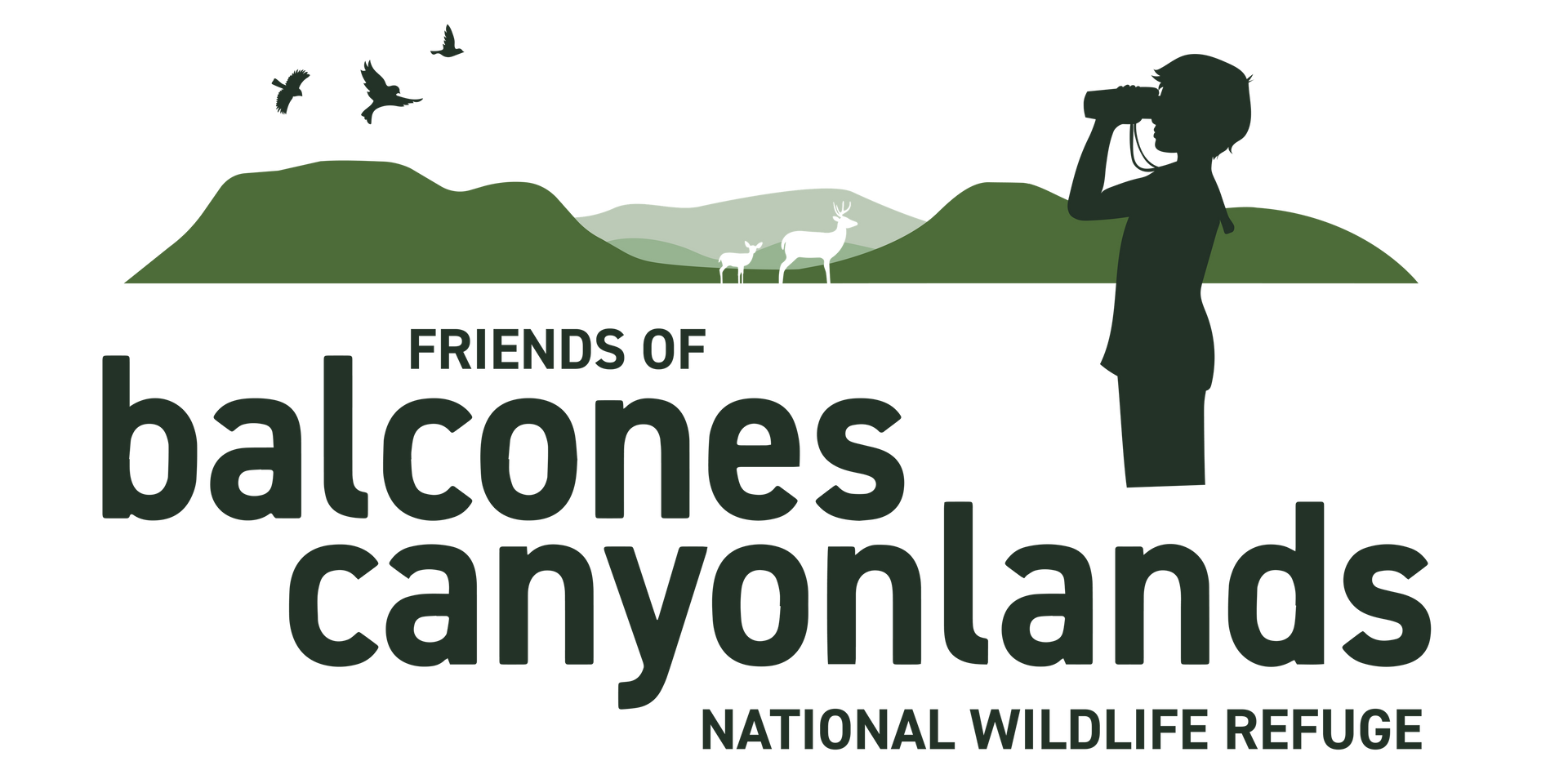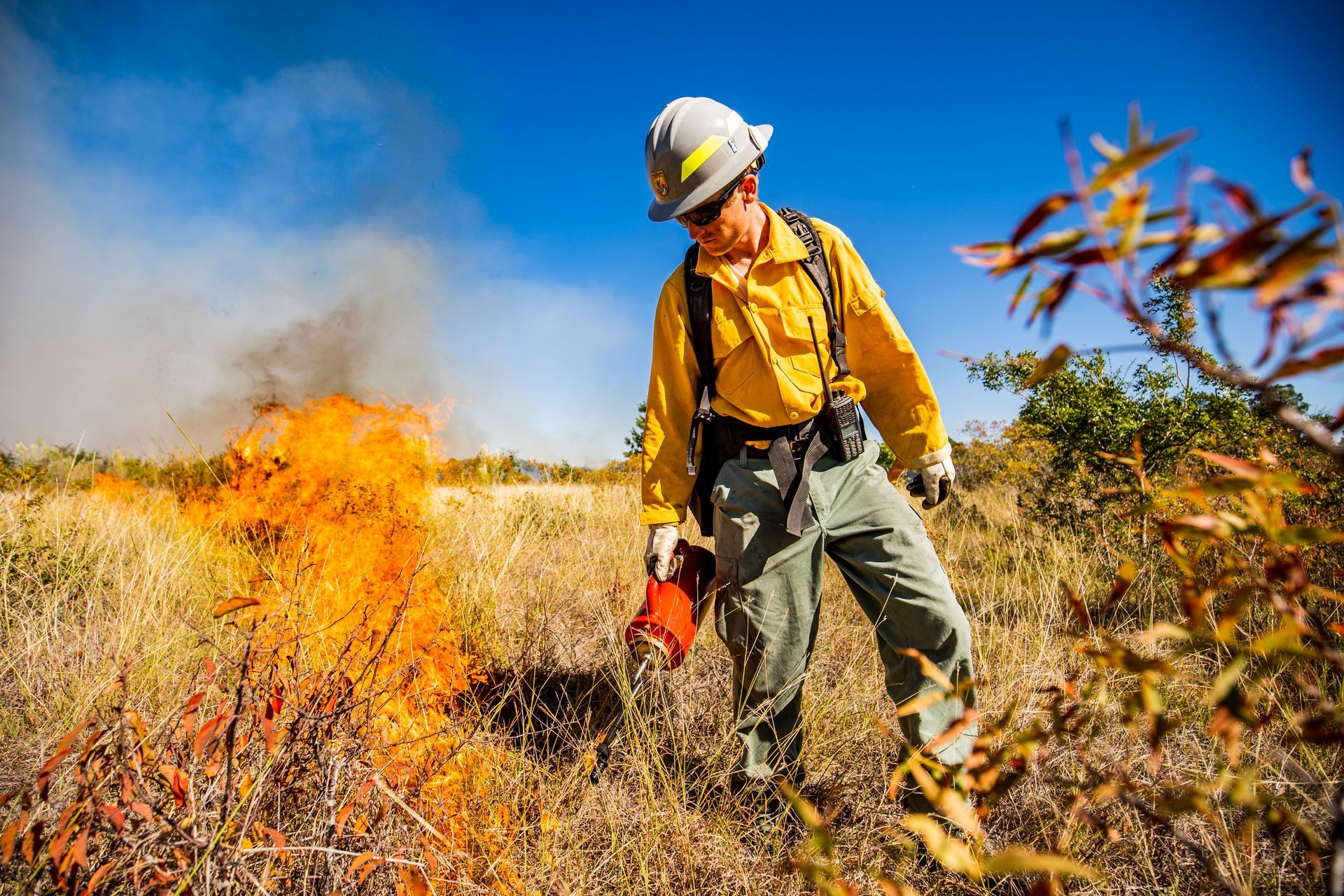Prescribed Fires and Private Lands
A Partnership for Conservation
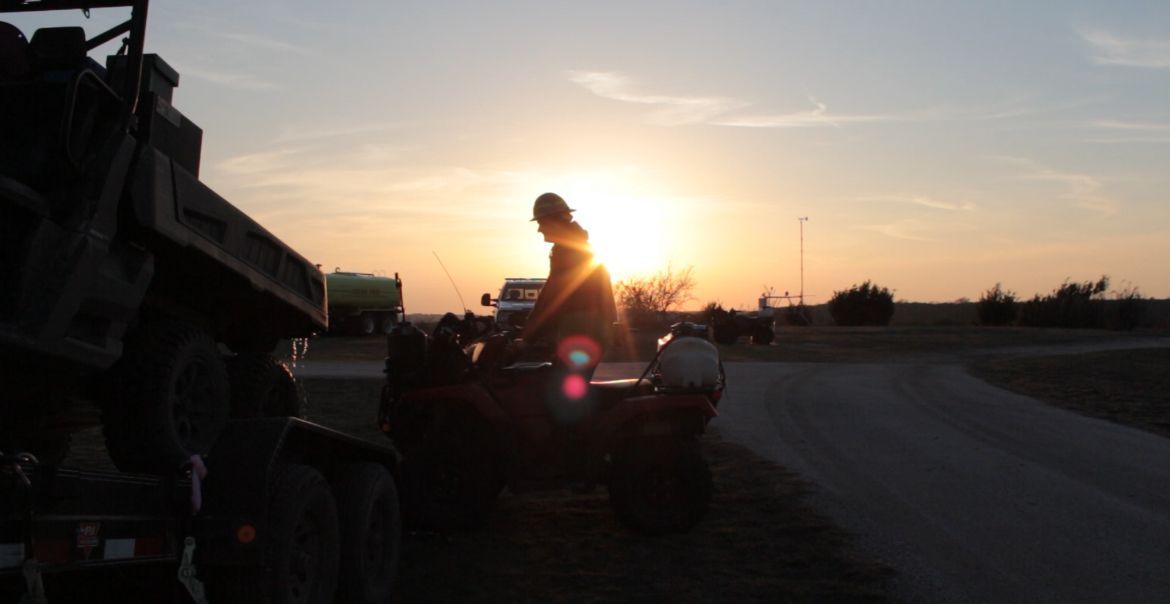
Private property, as articulated by John Locke in the 17th century, has long been regarded as a fundamental natural right. Philosopher Hannah Arendt later distinguished between the public and private spheres, describing their coexistence as essential for enabling collective action and shared meaning.
What happens when the boundaries between public and private intersect with something as universal as ecological preservation? The answer lies in the partnership between private landowners and conservationists, particularly through the use of prescribed fires.
Expanding Landscapes and Restoring Habitats
Prescribed fires are a tool in overall habitat restoration that benefits wildlife species and maintains ecological balance. While federal refuges often implement these controlled burns, private landowners are equally important in expanding the landscape of protected and rejuvenated ecosystems.
“A large part of my job is going out to ranches on-site visits, meeting landowners, corresponding with them, and looking at their properties to try to see what their management goals and interests are,” said Trent Teinert, a private lands biologist with the Partners for Fish and Wildlife Program at the U.S. Fish and Wildlife Service.
For species like the endangered golden-cheeked warbler, fire management ensures that juniper-oak woodlands remain intact while also encouraging the recruitment of native oaks. These habitats are consistently monitored for long-term habitat sustainability.
"The refuge was established primarily for the benefit of two endangered species: the golden-cheeked warbler and black-capped vireo," said Scott Rowin, a refuge biologist at Balcones Canyonlands National Wildlife Refuge. "A lot of the work that we do centers around those two species, trying to promote and protect the habitat for them."
By incorporating private lands, especially those adjacent to refuges or federal properties, the overall area of quality habitat can be expanded, creating interconnected landscapes that support diverse wildlife.
"A lot of times, we're trying to find projects that have the most impact on declining wildlife species," Teinert said. "By helping private landowners adjacent to their refuges or other federal property, we can increase the size of that good quality habitat on neighboring properties."

Collaboration with Landowners
The success of prescribed fire efforts relies on strong partnerships and understanding between conservationists and landowners. This is why biologists like Teinert and Scott assist in facilitating the appropriate conversations and conditions - consulting where the operations are appropriate.
“You don't own the land, they own the land," said Teinert. "You have to help them accomplish goals they're looking for that also fall in line with the goals of the service."
At Balcones Canyonlands, Rowin and his team sometimes work with fire crews, academic researchers, and other agencies to enhance prescribed burn techniques. An ongoing project with the University of Texas at Austin that uses LiDAR technology to map understory vegetation density and predict fire behavior. But the restoration techniques vary case-by-case.
"On restoration projects, we utilize prescribed fire initially to reduce the biomass of grasses that were there," Scott said.
Collaborations with universities, nonprofits, and other organizations further expand private efforts, helping identify biologically significant areas and connect with landowners. “A lot of these collaborations with other partner organizations, either universities or nonprofits, are generally to help build a network with private landowners,” Teinert said.
Cost-sharing programs and federal funding also play a role, but securing consistent resources remains a challenge.
"The vast majority of the funding for the biology program comes through what's allocated to the refuge," Rowin said. "Every year that I've been here, it seems like our funding has decreased. Just having money available to actually implement habitat restoration projects is very, very challenging.”
While the aim for private land projects is to provide 50/50 cost-share, funding is just one aspect of making habitat restoration realistic for landowners. “A lot of it is meeting the landowners, building relationships, and then trying to assess their goals and what their property provides for wildlife and the big picture across the state of Texas," Teinert said.
Fire and the Wildland-Urban Interface
One of the growing challenges in fire management is the increasing expansion of the wildland-urban interface (WUI). The term refers to the zone where human development meets natural landscapes. As suburban sprawl pushes deeper into fire-prone areas, the need for proactive fire management becomes more significant.
"The main thing is, we're not here to manage for invasive, exotic species, and we're here to manage for native species," Rowin said. "So much of the land is being lost due to development.”
Prescribed fires on private lands serve various purposes:
- Reclamation fires: Intensive burns to reduce woody vegetation and restore natural conditions.
- Maintenance fires: Systematic burns conducted every 3-10 years to maintain existing habitat quality.
- Post-restoration fires: Used to clear residual material after brush thinning or other restoration projects.
These fires become rich sources for enhancing soil health, increasing nutrient cycling, and promoting biodiversity, even helping build carbon in the soil, according to research referenced by Teinert.
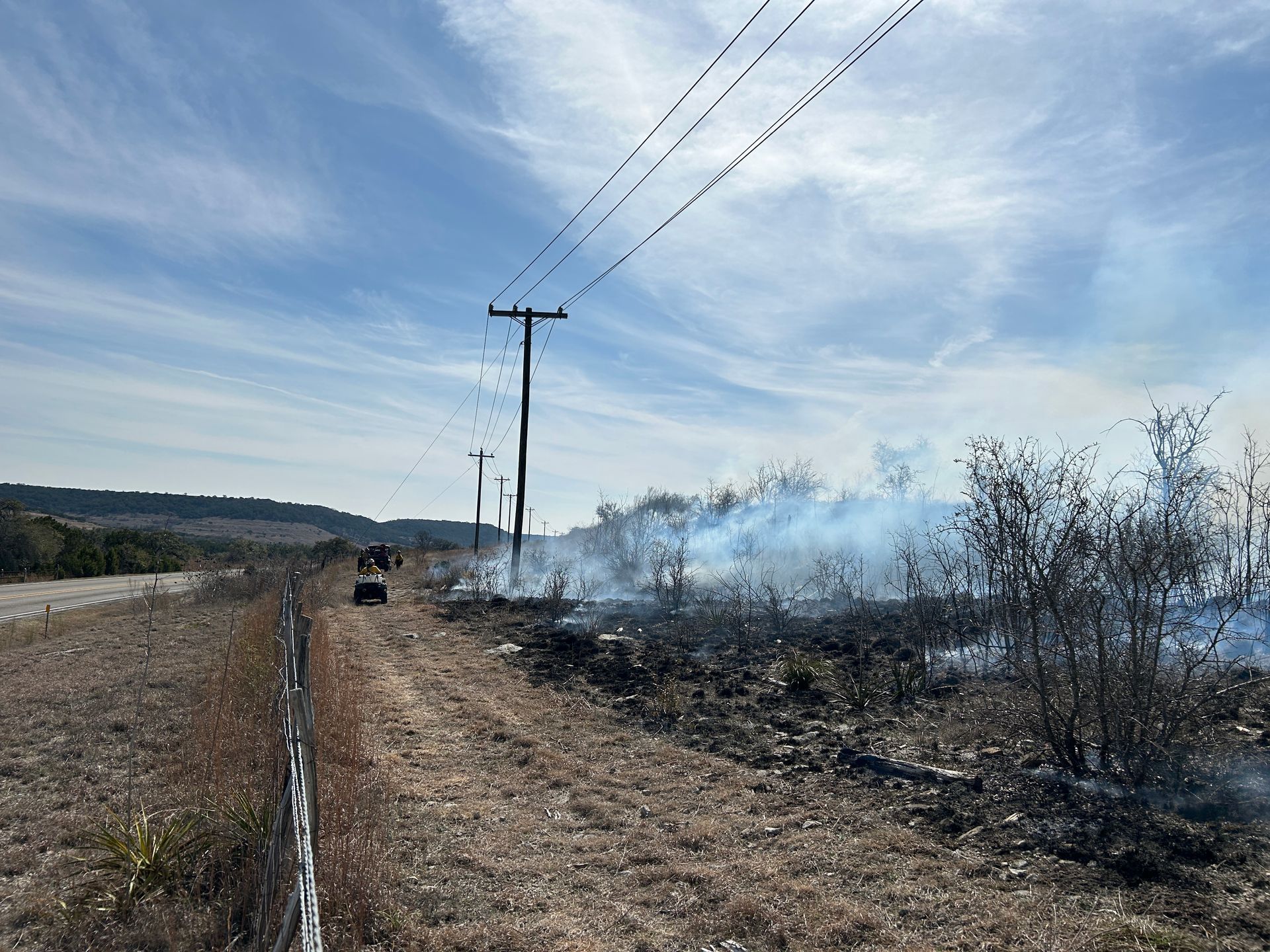
Research Toolkit
Despite the evidential benefits of prescribed fire operations, misconceptions persist. Many landowners worry about fire escaping control, yet professionals maintain a 99.5% success rate in executing safe burns. Others believe burning on windy days is dangerous, but moderate wind speeds (6-15 mph) improve fire management.
The effectiveness of prescribed burns is often measured through photo points, which document before-and-after changes in the landscape. Other methods include vegetation measurements to assess habitat structure.
In addition to prescribed burns, conservationists use techniques like geolocators to track migratory patterns of key species and point counts to assess population health, according to Rowin. Grassland restoration projects also combine fire with mechanical tools, such as disking and reseeding with native plants, to outcompete invasive species like KR bluestem.
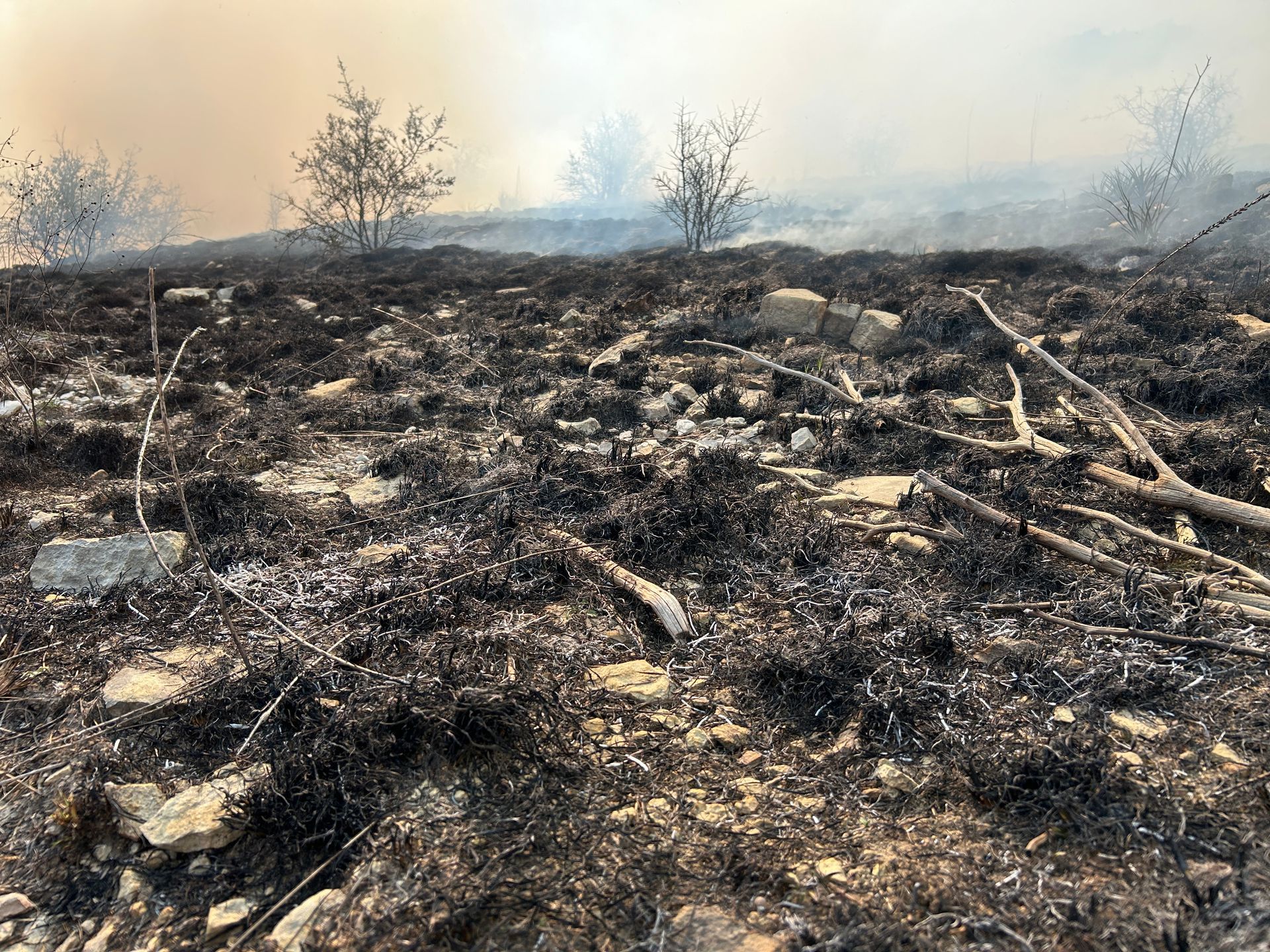
Shared Goals Looking Ahead
Texas landowners are often conservation-minded, according to Teinert, valuing healthy land and thriving wildlife. “Most are concerned with maintaining healthy wildlife populations and streams on their property,” Teinert said. Aligning these interests with broader conservation goals ensures mutual success.
By leveraging prescribed fires and fostering partnerships, private lands are transformed into vital components of large-scale conservation efforts. “It’s about working toward a common goal,” Teinert said. “Benefiting both landowners and wildlife.”
